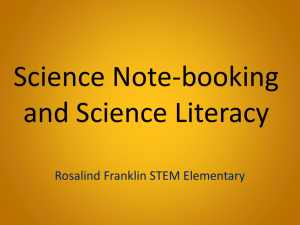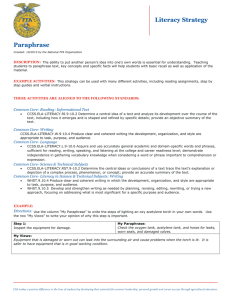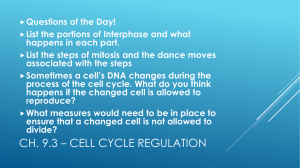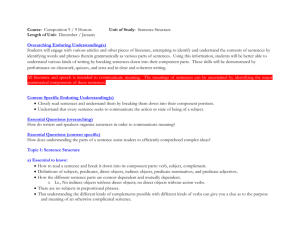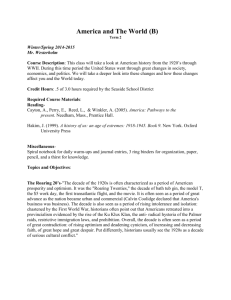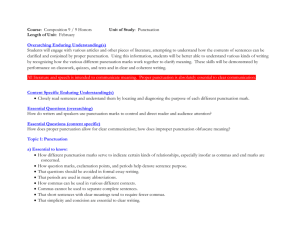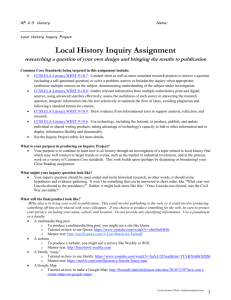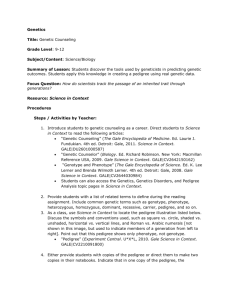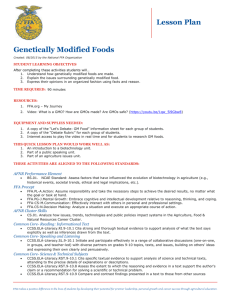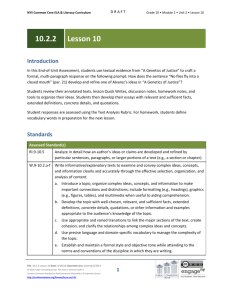9-10 Science.Stem Cells
advertisement
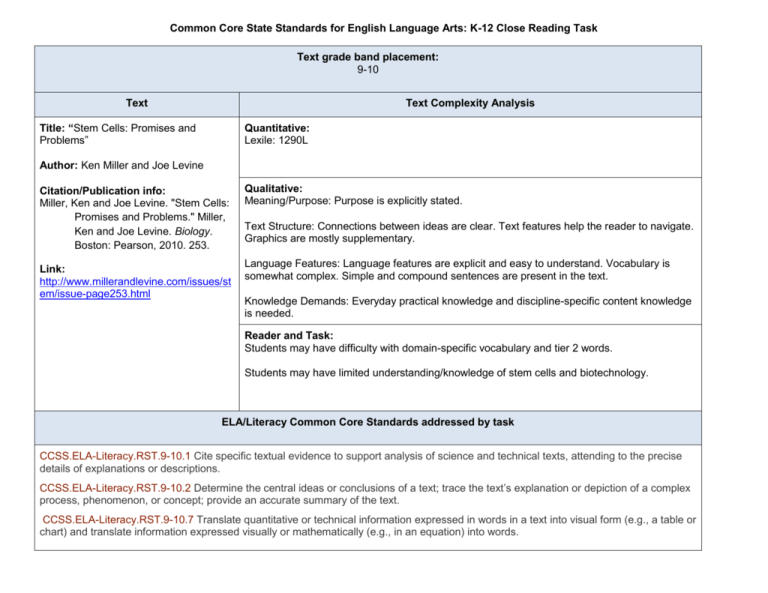
Common Core State Standards for English Language Arts: K-12 Close Reading Task Text grade band placement: 9-10 Text Text Complexity Analysis Title: “Stem Cells: Promises and Problems” Quantitative: Lexile: 1290L Author: Ken Miller and Joe Levine Citation/Publication info: Miller, Ken and Joe Levine. "Stem Cells: Promises and Problems." Miller, Ken and Joe Levine. Biology. Boston: Pearson, 2010. 253. Qualitative: Meaning/Purpose: Purpose is explicitly stated. Link: http://www.millerandlevine.com/issues/st em/issue-page253.html Language Features: Language features are explicit and easy to understand. Vocabulary is somewhat complex. Simple and compound sentences are present in the text. Text Structure: Connections between ideas are clear. Text features help the reader to navigate. Graphics are mostly supplementary. Knowledge Demands: Everyday practical knowledge and discipline-specific content knowledge is needed. Reader and Task: Students may have difficulty with domain-specific vocabulary and tier 2 words. Students may have limited understanding/knowledge of stem cells and biotechnology. ELA/Literacy Common Core Standards addressed by task CCSS.ELA-Literacy.RST.9-10.1 Cite specific textual evidence to support analysis of science and technical texts, attending to the precise details of explanations or descriptions. CCSS.ELA-Literacy.RST.9-10.2 Determine the central ideas or conclusions of a text; trace the text’s explanation or depiction of a complex process, phenomenon, or concept; provide an accurate summary of the text. CCSS.ELA-Literacy.RST.9-10.7 Translate quantitative or technical information expressed in words in a text into visual form (e.g., a table or chart) and translate information expressed visually or mathematically (e.g., in an equation) into words. CCSS.ELA-Literacy.WHST.9-10.1 Write arguments focused on discipline-specific content. CCSS.ELA-Literacy.WHST.9-10.4 Produce clear and coherent writing in which the development, organization, and style are appropriate to task, purpose, and audience. CCSS.ELA-Literacy.WHST.9-10.9 Draw evidence from informational texts to support analysis, reflection, and research. What key insights should students take from this text? 1. 2. 3. 4. 5. Cells come from unspecialized cells that later differentiate into specialized ones. These unspecialized cells are called stem cells. Two different types of stem cells exist: embryonic and adult. Stem cells are being used in medicinal research to repair damaged tissue. Stem cells may be used to grow healthy new tissues and treat diseases such as diabetes. Controversy surrounds the use of embryonic stem cells. Text-Dependent Questions 1. 2. 3. 4. 5. 6. What central ideas about stem cells are present in the text? Why are the first cells in early embryonic development referred to as being “unspecialized”? After reading the text, what concept does the author convey in the picture? What are the implications for the use of stem cells in the medical field, according to the article? How does the author convey the need for stem cell research? Cite specific evidence from the text. According to the article, why is there controversy concerning stem cell research? Writing Mode Writing Prompt Argument Write a scientific argument about whether stem cell research is ethical and whether it should be permitted. Develop your argument with a claim, citing evidence from the text. Be specific about your reasoning. Develop a counterclaim and explain why you disagree with the argument. Scaffolding and support for special education students, English language learners, and struggling readers: Pre-teach vocabulary. Pair up a struggling reader with a partner to read and discuss the text. Allow extra time for the reading and writing tasks. Allow foreign language-English dictionary. How this task supports the content standards for relevant subject area courses in this grade band: This task is relevant for 9-10 Biology. The task will address standards pertaining to gene technology.







